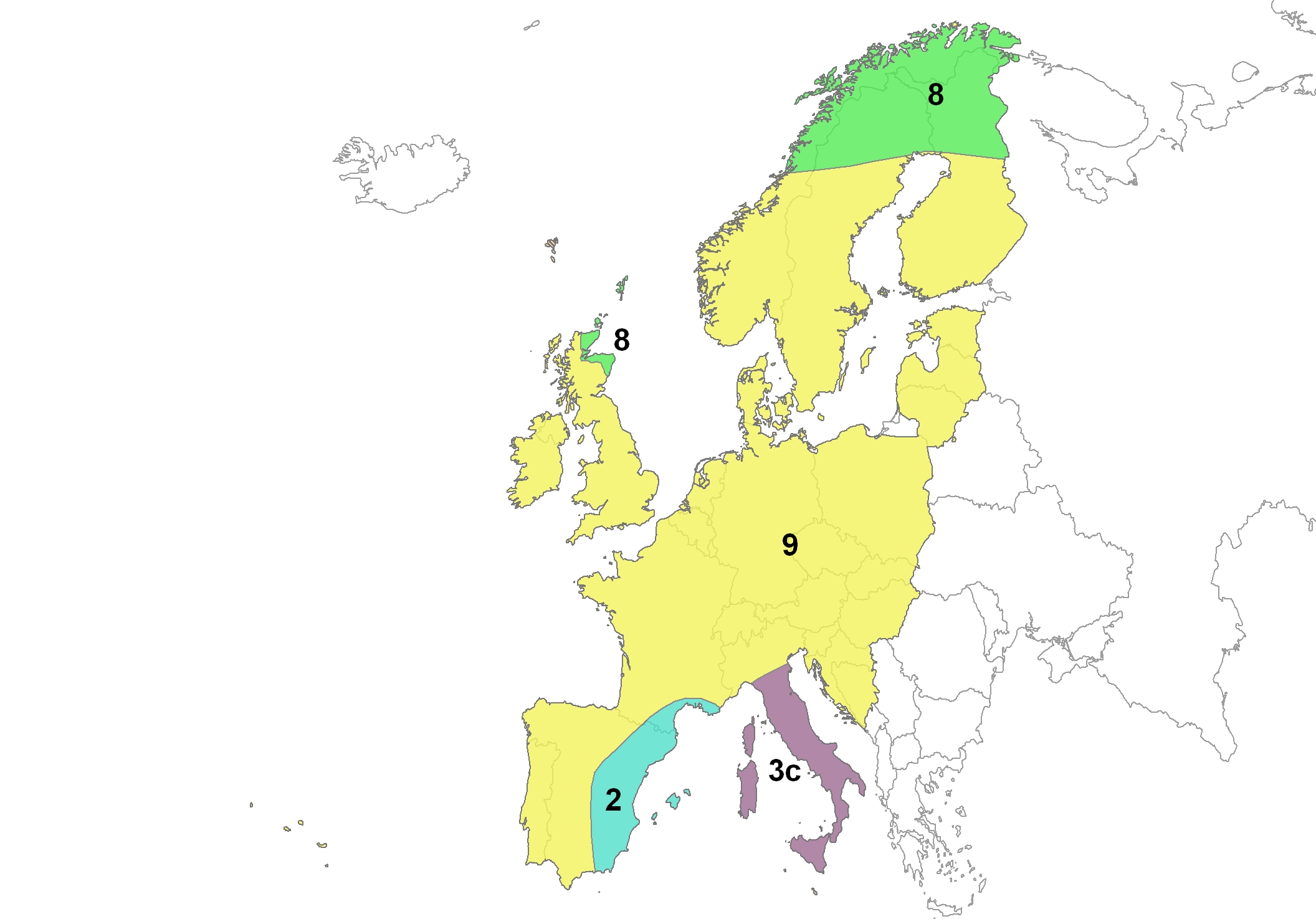
| | 1Southeast
60 stations
Capital: Jackson, MS
Stations in this zone experience a distinct seasonality, with a very
variable winter calendar, during which time nearly all weather types are
present. During the summer, the subtropical Bermuda High controls the
weather, and Moist Tropical (and Moist Moderate on cloudier days) account
for nearly 3/4ths of all days.
|

| | 2Basin and range
34 stations
Capital: Amarillo, TX
This climate zone is found in elevated arid areas. Following Zone 7, it
is the second-most affected by dry weather types, with nearly half of all
days DM.
|

| | 3aLaurentian
58 stations
Captial: Alpena, MI
Of the three mid-latitude subzones, this zone features the most variability, with considerable
difference between winter and summer, and the presence of all weather types throughout the summer,
with limited tropical influence in the winter.
|

| | 3bNorthern Rockies
33 stations
Capital: Glasgow, MT
Farther west of Zone 3a, this zone features much more limited MT-penetration.
With high terrain nearby, there is some incidence of DT year-round, but also greater MP occurrence
than in other temperate zones.
|

| | 3cTrue mid-latitude
54 stations
Capital: Washington, DC
Farther south of Zone 3a, this zone which borders Zone 1 contains a longer
summer of significant MT occurrence, and more limited polar-weather type influcence than 3a or 3b.
Its name derives from the fact that it's the only climate zone that is influenced by all weather types year-round.
|

| | 4Arctic
37 stations
Captial: Schefferville, QC
This zone is most directly affected by the Arctic, with an abundance of
polar weather types, with DP peaking in late winter, and MP peaking at the
autumn ice minimum.
|

| | 5Tropical
13 stations
Capital: Key West, FL
On the southern extreme of the continental US, and Puerto Rico and Hawaii,
this zone features a virtual MT monopoly in the summer, with limited variability
in the winter. This is the only zone with the same weather type making up more
than 50% of the calendar in every month of the year.
|

| | 6Boreal coast
15 stations
Capital: Yakutat, AK
Dominated by adjacent cold ocean waters, this climate zone is dominated by the MP weather type, which makes up over
half of the average calendar. Dry Polar is common in the winter months,
and MM occurence varies from station to station, based on proximity to a milder oceanic fetch on occasion.
|

| | 7Sonoran
5 stations
Capital: Phoenix, AZ
The most distinct of the climate zones, this is the only climate zone
dominated by DT. The five stations in this zone actually have two distinct
summer patterns; Phoenix and Yuma heavily affected by the (MT) monsoon, and
Las Vegas, Tucson, and Daggett not. The resulting climograph is midway
between the two.
|

| | 8Marine
16 stations
Capital: Halfiax, NS
This climate zone is quite similar to Zone 6, although with the
stations farther south, warmer waters bring MM days more frequently, with
MT occurring on occasion in summer. This climate zone also has the highest
TR frequency of the lot.
|

| | 9European
58 stations
Capitals: Seattle, WA and Stuttgart, Germany
Most of the stations within this climate type are in western Europe,
with a few Pacific US stations included. Similar to zones 3a and 3c, all
weather types have a presence, although due to Zone 9's maritime location,
MM is more prominent here than in any other zone.
|

